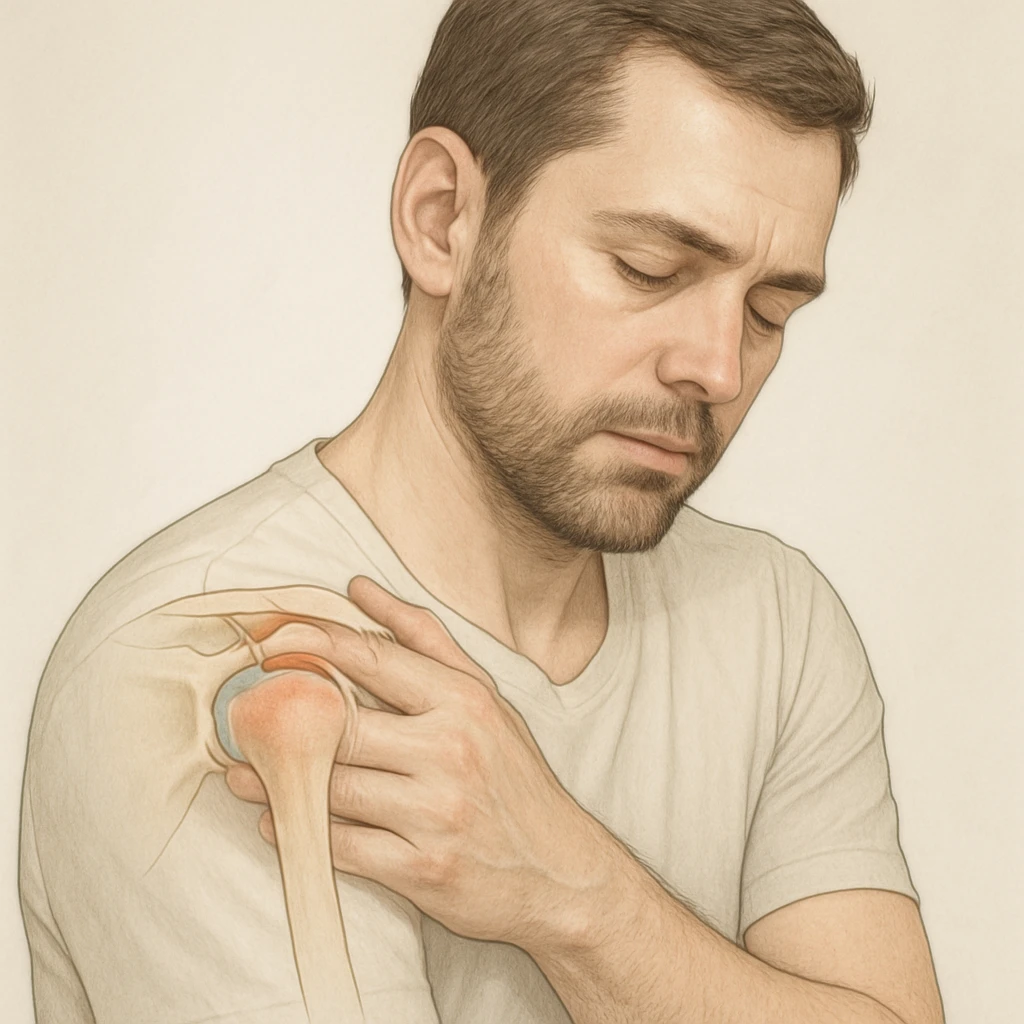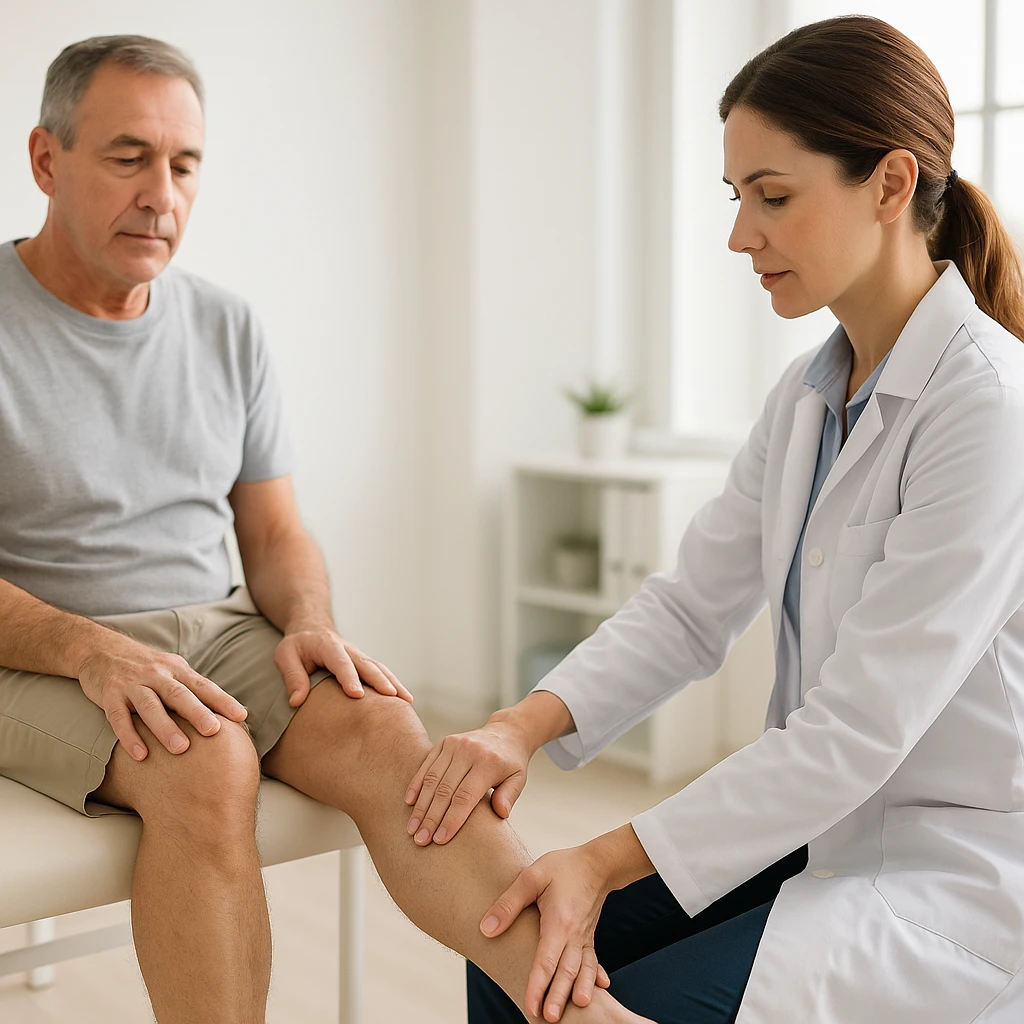Preventing Neck Stiffness: Posture, Daily Habits, and Early Support
What Causes Neck Stiffness and How It Develops
Neck stiffness refers to discomfort, tension, or difficulty moving the neck, particularly when turning the head from side to side. It can occur in people of all ages and is most often related to the muscles and soft tissues that support the cervical spine. While many cases are mild and temporary, knowing how the neck works and what can contribute to stiffness can help families better understand when simple home strategies may be appropriate and when medical attention is needed.
How the Neck Moves
The neck contains the cervical spine, a column of small vertebrae stacked vertically, along with muscles, ligaments, and connective tissue that provide both stability and flexibility. These structures allow the head to rotate, tilt, and bend while protecting the spinal cord and supporting the weight of the head. When the muscles along the neck become tense or strained, movement can feel limited or uncomfortable. This tension may also make turning or holding the head in one position more difficult.
Because the neck is involved in nearly every direction of head movement, even slight muscle irritation can be noticeable. Everyday activities like looking down at a phone, reaching awkwardly, or sleeping in an unusual position can temporarily shift how the muscles and joints work together. This is why many people experience short episodes of mild neck stiffness during periods of stress, busy schedules, or changes in routine.
Common Everyday Causes
One of the most frequent causes of neck stiffness is muscle strain from overuse or awkward posture. Holding the head forward for long periods, as often happens during computer or smartphone use, places additional stress on the muscles that support the neck. This can lead to soreness and reduced range of motion. Poor ergonomics, such as an improperly positioned chair or monitor, can make this strain more likely to occur.
- Prolonged device or desk use
- Forward head posture
- Improper screen or chair height
- Sleep positions that place the neck at an awkward angle
Sleep position can also play a role. When the head or neck is angled too sharply for several hours, certain muscles may tighten and become sore by morning. These types of everyday stiffness are usually temporary and improve gradually with gentle movement and time.
Less Common Serious Causes
Although most neck stiffness is related to muscle tension, some conditions require prompt medical evaluation.
- Pediatric torticollis, which can cause persistent neck stiffness and a noticeable head tilt
- Infection such as meningitis, which may involve sudden severe stiffness with fever or headache
Pediatric torticollis can be either present at birth or develop later and is characterized by persistent neck stiffness and a noticeable tilt of the head. Early recognition and appropriate care can help support comfortable, balanced movement as a child grows.
Infection is another important but less common cause. Sudden severe neck stiffness, especially when accompanied by fever or headache, can occur with conditions such as meningitis. This form of neck stiffness can progress quickly and requires immediate medical attention. Recognizing this difference is important in understanding when stiffness is part of a typical muscle strain and when it may indicate a more serious medical concern.
Overall, most musculoskeletal neck stiffness improves with conservative measures and time. Understanding how the neck moves and what contributes to stiffness can help families identify patterns and respond appropriately when symptoms arise.
Symptoms and When to Seek Medical Attention
Mild Symptoms
Mild, uncomplicated neck stiffness typically presents as localized discomfort or tightness in the muscles along the sides or back of the neck. Movement may feel restricted, especially when turning the head, but the discomfort is usually manageable and does not involve other concerning symptoms. These episodes often develop gradually and may be linked to periods of increased device use, stress, or sleeping in an unfamiliar position.
In these situations, the stiffness tends to improve over time as the muscles regain their usual flexibility. Individuals may notice that gentle movement becomes easier throughout the day, and the range of motion gradually returns without significant medical intervention. When stiffness remains localized and is paired with stable overall wellbeing, it is generally considered a mild and temporary concern.
Warning Signs Requiring Urgent Care
Some symptoms, however, suggest that neck stiffness may result from a more serious condition requiring prompt medical attention. These warning signs include:
- Fever
- Severe headache
- Sensitivity to light
- Rash
- Confusion
- Sudden or rapidly worsening symptoms
Other red flags include neurologic symptoms such as weakness, numbness, tingling, or difficulty coordinating movements. Neck stiffness following an injury, such as a fall or sudden impact, also warrants medical assessment. Persistent or worsening neck pain that does not gradually improve should be taken seriously, as it may signal an underlying issue that requires further examination.
How Clinicians Evaluate Neck Stiffness
When medical attention is sought, clinicians begin with a thorough history and physical examination. They will ask about when the stiffness began, whether movement changes the discomfort, and whether any additional symptoms have developed. During the physical exam, they assess the neck’s range of motion, muscle tenderness, and posture. This hands-on evaluation helps determine whether the stiffness is more likely related to muscle strain or if additional factors may be contributing.
Further testing is not required in most uncomplicated cases. However, when symptoms suggest a serious infection, injury, or neurologic involvement, additional evaluation may be recommended. If there is suspicion of meningitis, for example, clinicians will act quickly to assess for systemic signs and identify potential infectious exposure. This distinction between benign and urgent causes is central to ensuring appropriate, timely care while avoiding unnecessary interventions when symptoms are mild and self-limited.
Evidence-Based Treatment and Home Care
At-Home Relief Strategies
Many cases of neck stiffness improve gradually with simple, supportive measures taken at home. Adjusting daily activity to avoid movements that increase discomfort allows irritated muscles time to recover. Gentle movement is typically beneficial, as remaining completely still may cause muscles to tighten further. Heat or ice may also help support comfort. Heat can assist with loosening tense muscles, while ice may help reduce localized discomfort in situations where stiffness follows recent strain.
- Modify activities to reduce strain
- Use heat to relax tense muscles
- Use ice to ease discomfort after recent strain
- Practice gentle, slow neck movements within a comfortable range
- Avoid overexertion, especially early on
Gradual return to normal movement is an important part of recovery. Short, slow movements of the neck within a comfortable range can help maintain flexibility without overwhelming the muscles. Overexertion, especially in the early stages, can increase symptoms. Paying attention to how the neck feels during daily activities can help guide pacing. These measures support the body’s natural recovery process and are consistent with conservative care strategies used for many musculoskeletal conditions.
Role of Posture and Physical Therapy
Physical therapy is a standard approach for managing ongoing or recurrent neck stiffness. Therapists may guide individuals in exercises that gently stretch tight muscles and support balanced muscle function. These movements are designed to encourage comfortable range of motion and reduce strain placed on the neck during everyday activities. Posture correction is also an important part of recovery, especially when stiffness develops from prolonged device use or desk work.
- Guided stretching to improve flexibility
- Strengthening exercises to support neck stability
- Posture awareness during daily activities
- Adjusting head and shoulder alignment to reduce strain
Small adjustments in how the head and shoulders are positioned can make a noticeable difference in the level of strain the muscles experience. For example, maintaining the head in a neutral position rather than leaning forward decreases the effort required from the neck muscles. Over time, these posture and movement strategies may help reduce the likelihood of recurrent stiffness and support long-term comfort.
Supporting Children with Torticollis
In children, particularly infants, persistent neck stiffness may be associated with torticollis. Early identification plays a key role in supporting healthy movement patterns. When recognized early, stretching-based physical therapy can help improve mobility and promote balanced use of the neck muscles. The exercises used are gentle and guided in a way that aligns with a child’s stage of development and comfort.
- Recognize early head tilt or limited motion
- Use gentle stretching guided by a clinician
- Support comfortable positioning during daily activities
Caregivers may be shown how to support comfortable positioning during routine activities, such as feeding or playtime, to encourage a natural range of motion. Because the bones and muscles of young children are still developing, early intervention allows progress to occur alongside natural growth. Over time, many children experience improved movement and posture with consistent therapy and supportive routines.
Emergency Situations, Prevention, and Recovery Outlook
When Emergency Care Is Necessary
While many cases of neck stiffness are mild and improve gradually, certain symptoms suggest the need for immediate medical evaluation. Sudden, severe neck stiffness accompanied by fever, severe headache, sensitivity to light, rash, or confusion can indicate a serious infection affecting the brain and surrounding tissues. Because meningitis can progress quickly, suspected cases require urgent medical care to ensure timely diagnosis and treatment.
- Fever with severe neck stiffness
- Severe headache or sensitivity to light
- Rash or changes in alertness
- Numbness, weakness, or tingling
- Neck stiffness after a fall or sudden injury
Other situations that warrant emergency attention include neck stiffness following a fall, collision, or sudden injury, as these events may lead to structural damage or nerve involvement. Additionally, symptoms such as numbness, weakness, tingling, or difficulty coordinating movements suggest that the nervous system may be affected. Seeking care promptly in these scenarios helps protect overall health and supports the best possible outcomes.
Building Healthy Neck Habits
For many individuals, neck stiffness develops gradually due to daily habits that place repeated stress on the muscles around the cervical spine. Creating a supportive environment for the neck can reduce strain over time. Establishing a comfortable workstation, aligning screens at eye level, and adjusting chair height can help maintain a neutral head position. Regular short breaks to stretch and shift posture also play an important role in reducing tension from extended sitting or device use.
- Align screens at or near eye level
- Use a chair that supports a neutral spine position
- Take short movement breaks during long sitting periods
- Incorporate gentle stretching and balanced activity
- Follow age-appropriate vaccination recommendations
Movement routines that emphasize flexibility and balanced muscle use may also help limit recurring stiffness. Gentle stretching and mindful body positioning can encourage muscles to work efficiently without becoming overworked. For children and adolescents, routine physical activity supports natural posture development. Age-appropriate vaccination is another important part of preventing neck stiffness caused by certain infections, including forms of meningitis. These preventive steps work together to support long-term comfort and neck health.
Recovery Expectations
Most musculoskeletal neck stiffness improves gradually with conservative measures. Many individuals notice progress over several days to a week, particularly as gentle movement becomes more comfortable and daily activities are adjusted. The timeline can vary depending on the underlying cause, how long the stiffness has been present, and how quickly supportive strategies are put into place. Paying attention to how the neck responds during movement can help guide the pace of daily activities during recovery.
Follow-up with a clinician may be helpful if stiffness does not improve with time or if symptoms return frequently. In these situations, additional guidance on posture, physical therapy, or movement strategies may support longer-term progress. Recognizing when recovery is proceeding as expected and when further evaluation may be beneficial can help families feel prepared and confident throughout the healing process.
Frequently Asked Questions
Why does neck stiffness seem worse in the morning?
During sleep, the neck may stay in one position for several hours. If the muscles are slightly strained or the pillow does not support the head well, stiffness may feel more noticeable upon waking but often improves with gentle movement.
Can stress or worry make neck stiffness feel worse?
Yes. Stress can cause muscles in the neck and shoulders to tighten, which may increase discomfort or limit movement. Relaxation techniques and pacing daily activities can sometimes help reduce this muscle tension.
Is it normal for neck stiffness to come and go?
Many people experience occasional episodes, especially during busy periods, after long hours at a computer, or following changes in routine. If stiffness improves gradually and is not accompanied by concerning symptoms, it is often a temporary issue.
Should someone avoid all movement when their neck is stiff?
Remaining completely still can cause muscles to become tighter. Gentle, comfortable movement is generally helpful unless there are symptoms suggesting a more serious cause, such as fever, injury, or neurologic changes.
How do I know if my child’s neck stiffness could be torticollis?
Torticollis may present as a consistent head tilt or preference to look in one direction. If this pattern persists rather than changing from day to day, a clinician can evaluate it and provide early guidance.
Can poor posture from screens or desk work contribute to neck stiffness?
Yes. Leaning the head forward increases the effort required from the neck muscles. Adjusting screen height, taking movement breaks, and maintaining a neutral head position may help reduce strain over time.
When does neck stiffness require urgent medical care?
Immediate evaluation is important if stiffness occurs with fever, severe headache, rash, confusion, or sudden worsening of symptoms. These signs may indicate a more serious condition that needs prompt medical attention.
How long does recovery from mild neck stiffness usually take?
Most musculoskeletal stiffness gradually improves over several days to a week, especially as gentle movement becomes more comfortable. If symptoms persist or return frequently, a clinician may recommend physical therapy or posture-focused strategies.













